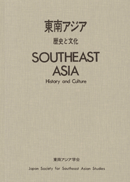Volume 2015, Issue 44
Displaying 1-26 of 26 articles from this issue
- |<
- <
- 1
- >
- >|
Article
-
2015Volume 2015Issue 44 Pages 5-26
Published: 2015
Released on J-STAGE: June 01, 2017
Download PDF (7091K) -
2015Volume 2015Issue 44 Pages 27-44
Published: 2015
Released on J-STAGE: June 01, 2017
Download PDF (19672K) -
2015Volume 2015Issue 44 Pages 45-63
Published: 2015
Released on J-STAGE: June 01, 2017
Download PDF (2052K) -
2015Volume 2015Issue 44 Pages 64-82
Published: 2015
Released on J-STAGE: June 01, 2017
Download PDF (1768K) -
2015Volume 2015Issue 44 Pages 83-100
Published: 2015
Released on J-STAGE: June 01, 2017
Download PDF (1775K) -
2015Volume 2015Issue 44 Pages 101-119
Published: 2015
Released on J-STAGE: June 01, 2017
Download PDF (1874K)
Note
-
2015Volume 2015Issue 44 Pages 120-141
Published: 2015
Released on J-STAGE: June 01, 2017
Download PDF (1831K)
Book Reviews
-
2015Volume 2015Issue 44 Pages 142-145
Published: 2015
Released on J-STAGE: June 01, 2017
Download PDF (1163K) -
2015Volume 2015Issue 44 Pages 146-149
Published: 2015
Released on J-STAGE: June 01, 2017
Download PDF (1291K) -
2015Volume 2015Issue 44 Pages 150-155
Published: 2015
Released on J-STAGE: June 01, 2017
Download PDF (1228K) -
2015Volume 2015Issue 44 Pages 156-160
Published: 2015
Released on J-STAGE: June 01, 2017
Download PDF (1311K) -
2015Volume 2015Issue 44 Pages 161-164
Published: 2015
Released on J-STAGE: June 01, 2017
Download PDF (1218K) -
2015Volume 2015Issue 44 Pages 165-167
Published: 2015
Released on J-STAGE: June 01, 2017
Download PDF (1213K) -
2015Volume 2015Issue 44 Pages 168-172
Published: 2015
Released on J-STAGE: June 01, 2017
Download PDF (1343K) -
2015Volume 2015Issue 44 Pages 173-177
Published: 2015
Released on J-STAGE: June 01, 2017
Download PDF (1347K) -
2015Volume 2015Issue 44 Pages 178-183
Published: 2015
Released on J-STAGE: June 01, 2017
Download PDF (1339K) -
2015Volume 2015Issue 44 Pages 184-188
Published: 2015
Released on J-STAGE: June 01, 2017
Download PDF (1226K) -
2015Volume 2015Issue 44 Pages 189-193
Published: 2015
Released on J-STAGE: June 01, 2017
Download PDF (1140K) -
2015Volume 2015Issue 44 Pages 194-197
Published: 2015
Released on J-STAGE: June 01, 2017
Download PDF (1218K) -
2015Volume 2015Issue 44 Pages 198-202
Published: 2015
Released on J-STAGE: June 01, 2017
Download PDF (1222K) -
2015Volume 2015Issue 44 Pages 203-207
Published: 2015
Released on J-STAGE: June 01, 2017
Download PDF (1246K) -
2015Volume 2015Issue 44 Pages 208-211
Published: 2015
Released on J-STAGE: June 01, 2017
Download PDF (1217K) -
2015Volume 2015Issue 44 Pages 212-215
Published: 2015
Released on J-STAGE: June 01, 2017
Download PDF (1220K) -
2015Volume 2015Issue 44 Pages 216-221
Published: 2015
Released on J-STAGE: June 01, 2017
Download PDF (1309K) -
2015Volume 2015Issue 44 Pages 222-225
Published: 2015
Released on J-STAGE: June 01, 2017
Download PDF (1219K) -
2015Volume 2015Issue 44 Pages 226-230
Published: 2015
Released on J-STAGE: June 01, 2017
Download PDF (1304K)
- |<
- <
- 1
- >
- >|
